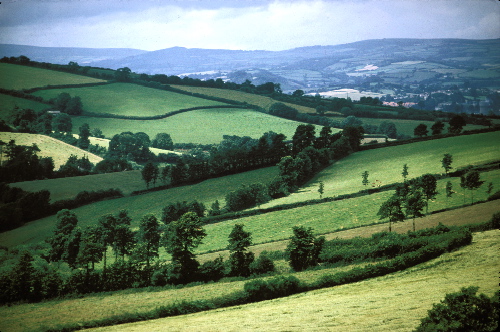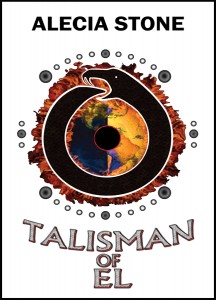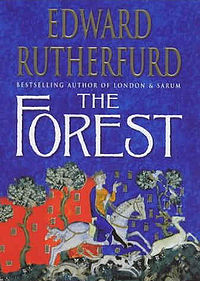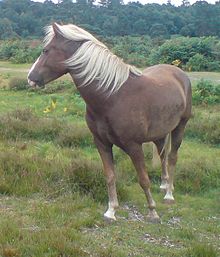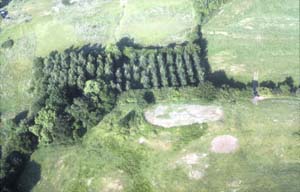I started this task with the mission of finding an English identity. Not out of love of England or dislike of any other part of the UK or the British Isles, but out of interest, in order to see what might be left if the concept of ‘Britain’ had officially broken up on Thursday 18th September when the results of the Scottish referendum on independence were announced.
 On that day last month, we learnt that the UK has not officially been decapitated by Scotland becoming an independent nation. Nevertheless, the social, political and cultural rupture between England and Scotland in particular is arguably at its most tangible of the recent age. Many feel it is only a matter of time before the subject is raised again, and again, with continued fervour. The disjuncture felt by so many of our population means that the questions I began asking myself before this challenge still stand: what does it mean to be a part of the UK and of the British nationality, now that an even firmer line has been carved between England and Scotland?
On that day last month, we learnt that the UK has not officially been decapitated by Scotland becoming an independent nation. Nevertheless, the social, political and cultural rupture between England and Scotland in particular is arguably at its most tangible of the recent age. Many feel it is only a matter of time before the subject is raised again, and again, with continued fervour. The disjuncture felt by so many of our population means that the questions I began asking myself before this challenge still stand: what does it mean to be a part of the UK and of the British nationality, now that an even firmer line has been carved between England and Scotland?
However disconcerted voters ultimately were by the unknown financial and institutional impacts of leaving the UK, it certainly seems true that the majority of Scottish people choose to identify themselves – in spirit and in name at least – as Scottish, rather than British. And, in doing so, they separate themselves from the homogenised concept of ‘Britishness’, leaving ‘Britishness’ to England, Wales and Northern Ireland to define. So how can it be defined?
Britishness, as it stands, is problematic. In fact, I can’t really think what it means to be British. There are stereotypes galore, of course, but an ability to wait patiently in queues or the appreciation of a cup of tea and a scone in the afternoon aren’t really true or convincing enough factors to found a whole national identity on. To work out what Britishness really is, the question should be:
What is it, being from England, in my character, way of life or world view that I share with people from Northern Ireland and Wales?
But, in order to work that out, surely I must first understand what it is, for that matter, that I even share with the rest of the population of England?
Hence this year-long challenge. If I, a devout bookworm, could read one book (if only I had time for more!) from every county in England, perhaps I would start to discover some innate characteristic of the English spirit that, however unpredictably, ties us all together. So what did I discover?
The Key Shared Themes
- Dislike or suspicion of neighbours, and a whole lot of tension…
One of the most recognisable traits across the English novels was the tendency of authors to portray their characters’ rejection of anything that is different to themselves or not perceived as ‘the Norm’; in other words, their characters’ hatred of ‘the Other’. Whether this ‘otherness’ is perceived as a result of differing religions, hometowns, education, values, income or any of a number of personal factors, if there is a difference in background, it is made to stand out.
 In most cases, characters in the novels I read this year were shown to feel most threatened and defensive against the examples of ‘Otherness’ which were closest to their own home, i.e. those characterised by their very neighbours. It has seemed to be the people next door, or on the same street, or in the same small community, whose differences are most apparent and the cause of most tension and unhappiness in main characters’ lives. Consider the huge number of references to “incomers” or “outsiders” we come across in almost all the counties’ novels, from where I started with David Almond’s The Fire-Eaters to where I ended up with Alan M. Kent’s Proper Job! Charlie Curnow. Both of these novels, for example, involve the arrival of new families or individuals from other parts of the country, bringing with them a very distinct set of behaviours and inciting a marked set of prejudices from the community they attempt (and, more often than not, fail) to infiltrate.
In most cases, characters in the novels I read this year were shown to feel most threatened and defensive against the examples of ‘Otherness’ which were closest to their own home, i.e. those characterised by their very neighbours. It has seemed to be the people next door, or on the same street, or in the same small community, whose differences are most apparent and the cause of most tension and unhappiness in main characters’ lives. Consider the huge number of references to “incomers” or “outsiders” we come across in almost all the counties’ novels, from where I started with David Almond’s The Fire-Eaters to where I ended up with Alan M. Kent’s Proper Job! Charlie Curnow. Both of these novels, for example, involve the arrival of new families or individuals from other parts of the country, bringing with them a very distinct set of behaviours and inciting a marked set of prejudices from the community they attempt (and, more often than not, fail) to infiltrate.
 It’s not just a matter of neighbourly rivalry, of course. Just as there is a lot of tension shown around the boundaries of people’s properties, so there is tension around town and county borders. For example, the majority of the books I read from Northern English counties – from Northumberland to Yorkshire and even below – featured unpopular, unpleasant or outcast Scottish characters from just over the border. I return to David Almond’s novel as an example, in which the eponymous ‘Fire-Eater’ is McNulty, a wild and tattooed Scottish street-performer who both delights and frightens young Bobby with his frantic energy – nay madness – but is utterly repulsive to Bobby’s mother. By representing Scotland through this strange, outcast character, Almond is able to reflect the region’s (subconscious?) suspicion and distrust felt towards England’s northern neighbours. This is also true of other areas where there are town and county borders: in Phil Rickman’s representation of the oddness of the Welsh in his Herefordshire-set novel, The Fabric of Sin, for example; and in the divide between ‘Central London’ and ‘Everywhere Else’ that can be felt in Xiaolu Guo’s A Concise Chinese-English Dictionary For Lovers. The ‘outsiders’ – even those who, geographically-speaking, aren’t really that far away at all – are demonised in the eyes of our novels’ protagonists, and are a source of great discomfort.
It’s not just a matter of neighbourly rivalry, of course. Just as there is a lot of tension shown around the boundaries of people’s properties, so there is tension around town and county borders. For example, the majority of the books I read from Northern English counties – from Northumberland to Yorkshire and even below – featured unpopular, unpleasant or outcast Scottish characters from just over the border. I return to David Almond’s novel as an example, in which the eponymous ‘Fire-Eater’ is McNulty, a wild and tattooed Scottish street-performer who both delights and frightens young Bobby with his frantic energy – nay madness – but is utterly repulsive to Bobby’s mother. By representing Scotland through this strange, outcast character, Almond is able to reflect the region’s (subconscious?) suspicion and distrust felt towards England’s northern neighbours. This is also true of other areas where there are town and county borders: in Phil Rickman’s representation of the oddness of the Welsh in his Herefordshire-set novel, The Fabric of Sin, for example; and in the divide between ‘Central London’ and ‘Everywhere Else’ that can be felt in Xiaolu Guo’s A Concise Chinese-English Dictionary For Lovers. The ‘outsiders’ – even those who, geographically-speaking, aren’t really that far away at all – are demonised in the eyes of our novels’ protagonists, and are a source of great discomfort.
 I say once more, one key theme across these novels was how much English characters seem to distrust those closest to them, including their next-door neighbours. Through these narrative examples of unwelcoming communities, it seems as though England is a country of mini-nations, each one self-sufficient and resentful of incomers or anything alternative to their defined norms.
I say once more, one key theme across these novels was how much English characters seem to distrust those closest to them, including their next-door neighbours. Through these narrative examples of unwelcoming communities, it seems as though England is a country of mini-nations, each one self-sufficient and resentful of incomers or anything alternative to their defined norms.
- The importance of owning property & having one’s own space
If I was ever in any doubt about the age-old saying, reading these novels has certainly confirmed that an Englishman’s home really does seem to be his castle. For our protagonists (as well as for many more minor characters), defining what belongs to oneself – and protecting it from those ghastly ‘outsiders’ – is of paramount concern.
 For example, over this year, we’ve read novels where the physical purchase and upkeep of property is the main feature, as a matter of self-definition and pride, such as The Legacy of Hartlepool Hall by Paul Torday, and Money Can’t Buy Me Love by Julie Reilly. Without large houses to identify themselves by, these characters soon feel lost, their senses of selfhood undermined. We’ve also read novels where characters refuse or abhor the leaving of the homes they have made for themselves, due to fear and hatred of everything outside, such as The Woman Who Went To Bed For A Year by Sue Townsend. There are those characters who try to deny that anything exists outside their safe, four-walled universe, such as the father in My Sister Lives on the Mantelpiece, by Annabel Pitcher, who creates a shrine for his dead daughter inside his family home and cocoons himself in the unhealthy belief that she is still alive. Even those characters who choose to rebel against the normative desire for property ownership do, at the very least, seek to mark out and define their own living areas, implementing private habits and traditions to make spaces their own – such as the nomadic gypsies who refuse to be pinned down to one location in Katherine Webb’s The Legacy but who are protective of their common-land field whilst they remain; or taciturn Anne who resolutely removes herself from society in Laura Beatty’s Pollard in order to build her own woodland habitat.
For example, over this year, we’ve read novels where the physical purchase and upkeep of property is the main feature, as a matter of self-definition and pride, such as The Legacy of Hartlepool Hall by Paul Torday, and Money Can’t Buy Me Love by Julie Reilly. Without large houses to identify themselves by, these characters soon feel lost, their senses of selfhood undermined. We’ve also read novels where characters refuse or abhor the leaving of the homes they have made for themselves, due to fear and hatred of everything outside, such as The Woman Who Went To Bed For A Year by Sue Townsend. There are those characters who try to deny that anything exists outside their safe, four-walled universe, such as the father in My Sister Lives on the Mantelpiece, by Annabel Pitcher, who creates a shrine for his dead daughter inside his family home and cocoons himself in the unhealthy belief that she is still alive. Even those characters who choose to rebel against the normative desire for property ownership do, at the very least, seek to mark out and define their own living areas, implementing private habits and traditions to make spaces their own – such as the nomadic gypsies who refuse to be pinned down to one location in Katherine Webb’s The Legacy but who are protective of their common-land field whilst they remain; or taciturn Anne who resolutely removes herself from society in Laura Beatty’s Pollard in order to build her own woodland habitat.
 There are a multitude of reasons why owning property or marking out places as one’s own is so important to the characters in these English novels but, whichever way you look at it, it seems to come down to a need to define oneself in a particular way – as having a particular social or financial status, perhaps, or in order to create one’s own reality without being inhibited by others, or simply to prove to oneself and everyone else that you are part of (or not part of, as the case may be) a certain family or community. These ideas are not limited to a particular area of England: the importance of property ownership or of defining one’s own space is a common theme all over.
There are a multitude of reasons why owning property or marking out places as one’s own is so important to the characters in these English novels but, whichever way you look at it, it seems to come down to a need to define oneself in a particular way – as having a particular social or financial status, perhaps, or in order to create one’s own reality without being inhibited by others, or simply to prove to oneself and everyone else that you are part of (or not part of, as the case may be) a certain family or community. These ideas are not limited to a particular area of England: the importance of property ownership or of defining one’s own space is a common theme all over.
 Ultimately, this appears to suggest a desperate urge felt by English people to construct and establish a stable sense of belonging and a very physical home that they are in charge of and that no one can take away. If the American Dream is centred on the pursuit of upward social mobility and equal opportunities for everyone, then the English Dream is focussed on setting out our home; being in control of where and how we belong. Which leads me conveniently to the next theme…
Ultimately, this appears to suggest a desperate urge felt by English people to construct and establish a stable sense of belonging and a very physical home that they are in charge of and that no one can take away. If the American Dream is centred on the pursuit of upward social mobility and equal opportunities for everyone, then the English Dream is focussed on setting out our home; being in control of where and how we belong. Which leads me conveniently to the next theme…
- The desperate urge to belong
 Never have I come across so many characters all at once, from independent novels, who display such a complex about needing to belong somewhere. The majority of characters we’ve read about are presented as paranoid, miserable, socially awkward, unstable, self-loathing, nervous, pained and tormented individuals who are clearly ill at ease with their habitats or circumstances, who simply do not feel at home anywhere, and are not made to feel welcome by anyone around them either (perhaps because they display some aspect of ‘otherness’…see #1).
Never have I come across so many characters all at once, from independent novels, who display such a complex about needing to belong somewhere. The majority of characters we’ve read about are presented as paranoid, miserable, socially awkward, unstable, self-loathing, nervous, pained and tormented individuals who are clearly ill at ease with their habitats or circumstances, who simply do not feel at home anywhere, and are not made to feel welcome by anyone around them either (perhaps because they display some aspect of ‘otherness’…see #1).
 Honestly, these English authors seem to have joined forces to show that there is a ginormous physical and emotional impact on people when they are not allowed to feel at home even in their own house. For me, the most memorable contrast between characters feeling in and out of place in their surroundings is in Benjamin Wood’s The Bellwether Revivals. Here, the arrogant but fascinating Eden, who is offensively and suffocatingly intelligent, considers himself thoroughly entitled to his prestigious position in the Cambridge University academic scene. Meanwhile, fellow Cambridge student Oscar, from a working class background and instinctively sceptical of the Cambridge hype, still finds himself, almost unwillingly, part of a daily fight to prove to himself and to his colleagues that he has the right to be there, or else face crippling insecurity.
Honestly, these English authors seem to have joined forces to show that there is a ginormous physical and emotional impact on people when they are not allowed to feel at home even in their own house. For me, the most memorable contrast between characters feeling in and out of place in their surroundings is in Benjamin Wood’s The Bellwether Revivals. Here, the arrogant but fascinating Eden, who is offensively and suffocatingly intelligent, considers himself thoroughly entitled to his prestigious position in the Cambridge University academic scene. Meanwhile, fellow Cambridge student Oscar, from a working class background and instinctively sceptical of the Cambridge hype, still finds himself, almost unwillingly, part of a daily fight to prove to himself and to his colleagues that he has the right to be there, or else face crippling insecurity.
 But there are a whole host of other examples of characters struggling to process the changing world and their place within it. In some cases this comes in the guise of characters trying to fathom how to redefine their existence in a Zombie-infested world, as in Jannicke Howard’s Only One Way. Alternatively, Martine McDonagh’s characters have to face a new reality with the struggle to adapt to the death of family member Phoenix in After Phoenix; not only does their previous happy existence fall out from under them, leaving them emotionally unstable, but also in physical terms their family home no longer feels like one – Dad even goes to live in the garden shed. Unsurprisingly, he doesn’t find much comfort there either.
But there are a whole host of other examples of characters struggling to process the changing world and their place within it. In some cases this comes in the guise of characters trying to fathom how to redefine their existence in a Zombie-infested world, as in Jannicke Howard’s Only One Way. Alternatively, Martine McDonagh’s characters have to face a new reality with the struggle to adapt to the death of family member Phoenix in After Phoenix; not only does their previous happy existence fall out from under them, leaving them emotionally unstable, but also in physical terms their family home no longer feels like one – Dad even goes to live in the garden shed. Unsurprisingly, he doesn’t find much comfort there either.
There is a clear difference in the way authors use language and imagery and manipulate characterisation to contrast individuals who ‘belong’ with those who have lost all sense of self. For the English, it seems, establishing a sense of belonging is the biggest step towards happiness.
- I could go on for hours, but I suppose it might be better for everyone if I bullet point some other key trends in the novels that I spotted:
- the prevalence of the retail industry – there were countless trips to the high street, buying sprees and shop name-drops to count
- the collective horror at the memory of 9/11 and the fear of other terrorist atrocities – this came up time and again all over the country where novels were first published after 2001
 the frequent use of children’s narrative perspectives, such as in Black Swan Green by David Mitchell or Bageye At The Wheel by Colin Grant. Authors seem to use their innocent outlooks as a means to emphasise the failings of adults and the brokenness of society.
the frequent use of children’s narrative perspectives, such as in Black Swan Green by David Mitchell or Bageye At The Wheel by Colin Grant. Authors seem to use their innocent outlooks as a means to emphasise the failings of adults and the brokenness of society.
 Judging purely from my interpretation of these narrative works, England is represented as a country that abhors anything or anyone that is remotely different from the expected norm, whether in terms of appearance, behaviour, class, social background, education, age or ethnicity. In fact, England’s population is often presented as so single-mindedly focussed on protecting their own individual identities, homes, properties, and small places on Earth that there is very little established sense of community, even where similarities exist. Rather, England seems to be a nation of individuals intent on building as many walls between themselves and the rest of the country as possible, both as a means to improve their status and better their own existences through property ownership and development, as well as to ward off the dangerous incomers and outsiders that are so threatening and suspicious to them.
Judging purely from my interpretation of these narrative works, England is represented as a country that abhors anything or anyone that is remotely different from the expected norm, whether in terms of appearance, behaviour, class, social background, education, age or ethnicity. In fact, England’s population is often presented as so single-mindedly focussed on protecting their own individual identities, homes, properties, and small places on Earth that there is very little established sense of community, even where similarities exist. Rather, England seems to be a nation of individuals intent on building as many walls between themselves and the rest of the country as possible, both as a means to improve their status and better their own existences through property ownership and development, as well as to ward off the dangerous incomers and outsiders that are so threatening and suspicious to them.
I found examples of this behaviour, to varying degrees, in every single one of the novels I read for this challenge. No wonder I struggle to define a sense of English national identity when authors themselves are critical of any aspect of unity within the country’s bounds. Perhaps this shows I’m not the only one in doubt.
What does it mean to be English? I’m still not too sure, but I think it has something to do with fighting your own corner, for good or for bad. It’s certainly not the most hopeful or sociable way to be – feeling constantly cornered, threatened, defensive against others. Whose fault is it that individuals feel this way? In some cases it’s shown to be the government that makes life unbearable and endangers people’s freedom or social mobility. In other cases it has simply become society’s habit after years of suspicion towards incomers and outsiders. It is not always clear. However, I suppose we have also witnessed some of the redeeming features of this behaviour too: the motivation to take agency and define oneself on one’s own terms; the safety and love felt on the rare occasions when there are true senses of and family community. Individuals in the novels sometimes found peace together in the unlikeliest of places.
Despite not finding a clear answer as to what Englishness might be, I am still incredibly pleased with the way the Placing Myself challenge has gone. I do at least now have an idea of what might be the true privateness of the English, and if that is a common trend across the country, then perhaps we can call that a national characteristic and take some satisfaction there.










